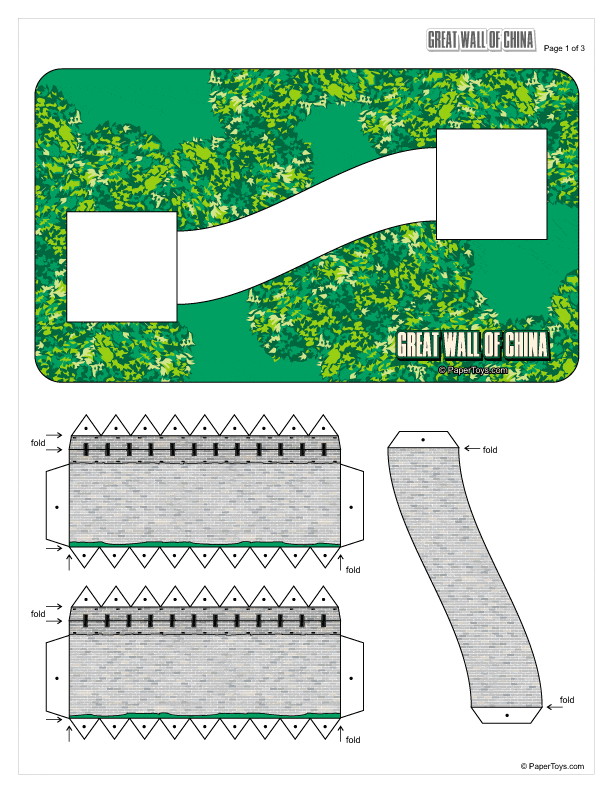Great Wall of China Model
The Great Wall is one of the largest building construction projects ever completed. It stretches across the mountains of northern China, winding north and northwest of Beijing. It is constructed of masonry, rocks and packed-earth. It was over 5,000 km (=10,000 Li) long. Its thickness ranged from about 4.5 to 9 meters (15 to 30 feet) and was up to 7.5 meters (25 feet) tall.
In Chinese the wall is called '10,000-Li Long Wall' (10,000 Li = about 5,000 km = about 3100 miles)
The Great Wall of China was built over 2,000 years ago, by Qin Shi Huangdi, the first emperor of China during the Qin Dynasty (221 B.C - 206 B.C.). There existed some old fortification walls that originated around 700 B.C. (over 2500 years ago)
Armies were stationed along the wall as a first line of defense against the invading nomadic Hsiung Nu tribes north of China (the Huns). Signal fires from the Wall provided early warning of an attack.
For Centuries, Beijing has been the most strategic city in the north. Many dynasties in Chinese history actively built walls at various locations. The walls built during the Ming Dynasty (1368 - 1644) are the most often seen and best preserved, running over 373 miles and containing about 827 city wall platforms, 71 passes and countless towers.
The wall sections north of Beijing have undergone extensive restoration and was the first section open to tourists in 1957. This section of the Great Wall is visited annually by millions. It was here that President Richard Nixon and his wife, accompanied by Vice Premier Li Xiannian, visited on February 24, 1972, during his historic journey to China.
The famous sections of the Ming Dynasty Great Wall include the sections at Badaling, Huanghuacheng, Mutianyu, Jiankou, Gubeikou, Jinshanling and Simatai.
The Great Wall can be seen, with the aid of magnification, from Earth orbit, but, contrary to legend, is not visible from the moon, according to astronauts Neil Armstrong, Jim Lovell, and Jim Irwin.
